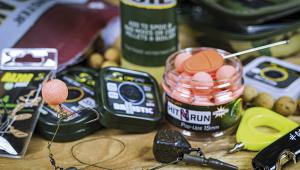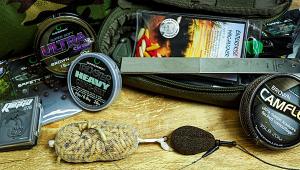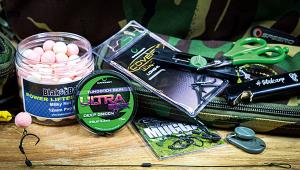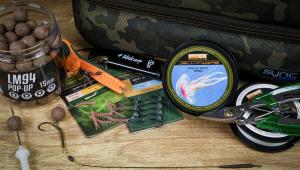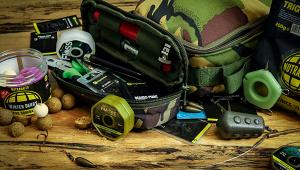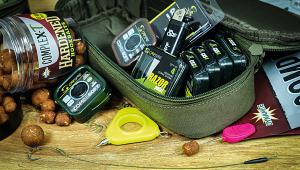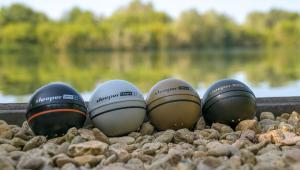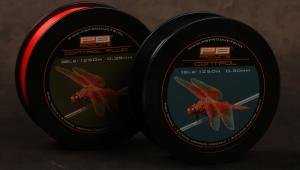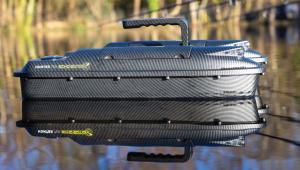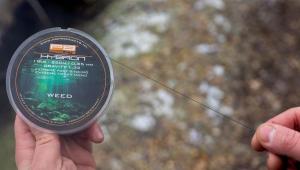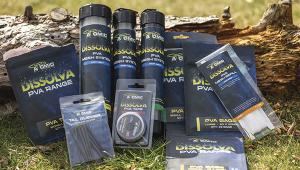Anatomy Of A Carp Rig | Gaz Fareham's Simple Silt Rig
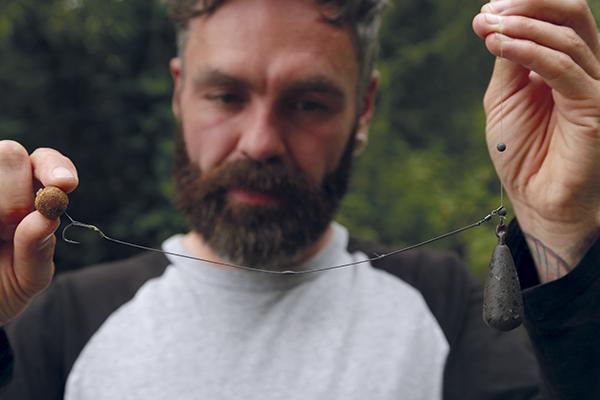
For me, autumn is always about fishing with boilies. In the summer I will still fish with boilies, but they will be mainly broken up and mixed in with a lot of pellets and seeds. When it gets past September, I pretty much fish boilies almost exclusively.
If I can, I like to then try and bait the lake I am fishing regularly. It is all about consistency and if you can apply the bait a few times a week, you will have a good chance that the fish are visiting the spots regularly.
The carp are trying to stack on their weight and boilies are the best way to do that, particularly with a boilie such as the Krill, which has everything that they could want and need in it. I do like to ramp up the attraction of the bait by adding some Pure Krill Liquid and GLM powder too, as that will sit and linger over the spot even if all the bait has gone.
Not only do I change the bait at this time of year, the areas that I want to target differ too. In the summer I may be looking at bars, bays, margins and so on, whereas in the autumn I prefer the slightly deeper and silty areas in the open water – spots with a nice bit of depth to them, and that firmer silt is a great place to put the rigs.
The silt will hold big larders of naturals and you will see the fizzing and sheeting on these areas as the carp dig out the bottom in search of them. If you can pick an area that the fish are already using and visiting, then you are on to a winner. To find these areas, I want the fish to firstly tell me where they want to feed.
Once I have pinpointed that area, I then have a feel around with a bare lead to see what it feels like. I am looking for a firm drop, not a gravel crack down and or soft lull in the tip. A firm drop and a smooth pull is good, and if there is a variation of this around it then perfect. What I mean by this is if the spot was surrounded by weed, off the side of some gravel or so on, something to make it stand out.
If you fished the silty meres of the north, which I did many moons ago, you would often get soft drops from the thick silt and eventually stumble across something that was a lot firmer. This is the kind of spot I am looking for as it will be firmer through fish feeding on it and pushing the silt away.
If I am fishing a lake regularly, I like to prep and bait up these sorts of spots quite heavily with boilie crumb. The carp are not so active, so they won’t be going far and they love crumb. It will also keep them in areas feeding for longer and all that smell will entice them in and they won’t leave. Even when they think they have eaten it all, there will always be some left and the liquids and powders I add to the mix will taint the silt with that smell.
In terms of rigs, I would always opt to fish with a helicopter rig. It allows the rig to lie flat if the lead buries slightly in softer ground. I can also adjust that top bead depending on how soft or hard the bottom is too. If it feels soft, I can lift it; firm then I will move it closer to the lead.
The rig is simple but is something that I have used for a long time and have faith in. I use a length of Tungskin, maybe seven inches, and tie that knotless knot style to a size 6 wide-gape pattern hook. The Tungskin sinks brilliantly and blends in really well with the dark lake bed of the silt. I have a small rig ring on the shank and a decent gap between that and the hook bait. The actual bait is a Krill Wafter that I have added some Krill Liquid, GLM and salt to. This matches the boosters put on my freebies and is super-attractive to the carp.
I like a balanced one with this rig as I feel that you get much better hook-holds and the wafter takes away the weight of the hook. The balanced bait also sits nicely on top of the silt and the fish can not only sense it they can see it too.
Sep-By-Step: Tying The Simple Silt Rig
1. Take a length of 25lb Tungsten.
2. Strip off a few inches of the coating.
3. Gaz likes to use a GLM boosted Krill Wafter.
4. Form a hair and attach the bait.
5. Tie on a small rig ring, allowing a centimetre or so distance to the bait.
6. Move the ring round the hook and tie a knotless knot.
7. Add a piece of shrink tube.
8. Form a big loop at the other end of the hook link.
9. Shrink the tubing down to create an aggressive curve.
10. Attach the loop to the swivel.
11. Add a couple of blobs of putty to the hook link.
12. The finished rig, perfect for fishing the silty areas.
- Log in or register to post comments
